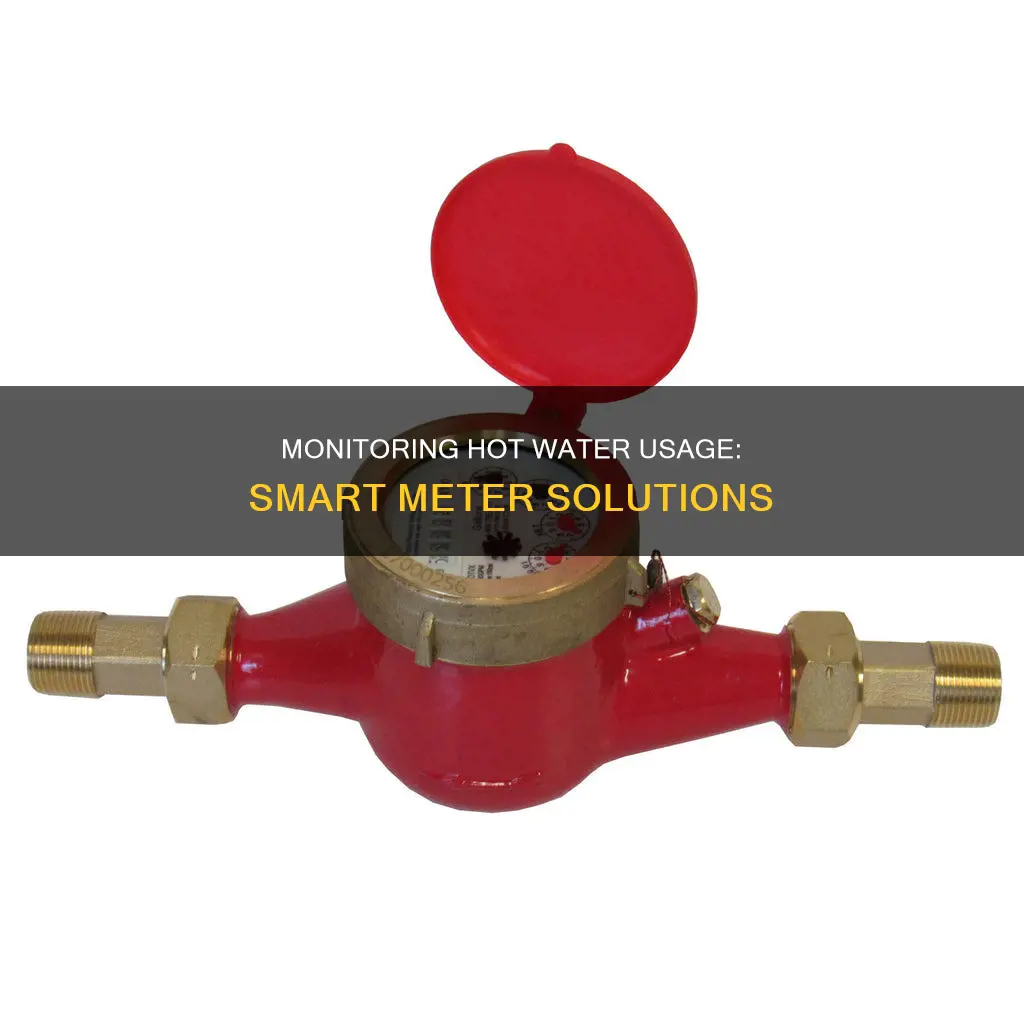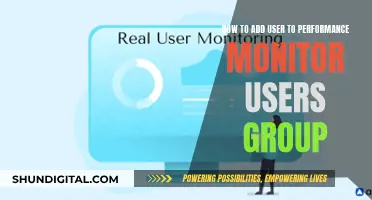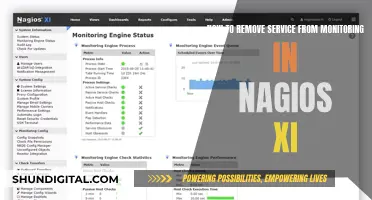
Monitoring hot water usage can help you save energy and money on your bills. In the average American home, domestic hot water uses 17% of the total energy. There are several ways to monitor your hot water usage, from simple manual calculations to installing a data acquisition system.
One low-tech way to monitor your hot water usage is to measure how much hot water you use over a week. You can time your showers and calculate the flow rate to work out how much hot water you need. You can then multiply this by the number of times you shower per week. You can do similar calculations for other activities that use hot water, such as cooking, cleaning, and running the dishwasher.
Another way to monitor your hot water usage is to install a data acquisition system. You can use an Arduino board to collect data on your hot water consumption. You will also need to install a flow meter on the cold water side of your hot water heater and write a computer program to control the Arduino. This method will give you detailed data on your hot water usage, which you can use to determine the most energy-efficient type and size of the water heater for your needs.
There are also various devices on the market that can help you monitor your hot water energy usage, such as the TED Pro Home, Sense, and IoTaWatt. These devices can help you track your energy usage over time and may be able to help you identify any problems with your water heater or other appliances.
| Characteristics | Values |
|---|---|
| Purpose | Saving energy and money |
| Average cost | $550 per year |
| Methods | Using a standard power meter, installing sensors, using Arduino boards, using a sub-meter/panel, using a data logger, using a smart meter, using a timer, using a current clamp attachment for a multimeter, using a cloud-based service |
| Tools | Arduino boards, flow meter, Adafruit data logging shield, PEX connectors, CT monitors, a multimeter, a smart meter |
What You'll Learn

Using a smart meter
Smart meters can be located in basements, utility rooms, or outside near the street. To access the meter, you may need to remove a cover or panel. The meter will either have a digital display or analog dials. Digital displays typically show water usage in cubic feet or gallons, while analog dials have a series of numbers or tick marks representing water usage.
By understanding your water usage patterns, you can detect abnormal usage and calculate your average daily use. For example, if you notice a sudden spike in your water usage, it could indicate a leak. Additionally, you can divide your total usage by the number of days in the billing cycle to calculate your average daily use.
Smart meters like bluebot offer advanced features such as tracking your water usage and flow rate, notifying you of potential leaks or abnormal usage, and providing detailed insights into your water consumption patterns. With real-time tracking and notifications, smart meters can put your water monitoring on autopilot, helping you save money and reduce water waste.
Regular monitoring of your water usage is crucial for maintaining an efficient water system. It helps identify leaks early, detect unexpected usage, and budget for water expenses. Depending on your water usage patterns, daily, weekly, or monthly monitoring is recommended to stay on top of your water consumption and identify any issues promptly.
Smart meters are a valuable tool for homeowners and property managers, providing insights into water usage patterns, detecting potential leaks, and helping save money on utility bills. By investing in a smart water meter, you can make water monitoring effortless and accurate, taking control of your water consumption, and contributing to water conservation efforts.
Monitoring Data Usage on iPhone 5: Verizon Guide
You may want to see also

Installing a data acquisition system
The first step in installing a data acquisition system is understanding the problem you are trying to solve and the specific parameters you want to measure. In this case, the goal is to monitor hot water usage to identify areas for improvement in energy efficiency and cost savings.
Once you have a clear understanding of the problem, you can start designing the system. This involves choosing the appropriate sensors, data logging devices, and software to collect, store, and analyse the data. In the case of monitoring hot water usage, you will likely need sensors that can measure flow rate, temperature, and pressure. You will also need a data logger that can record the data at the desired interval, such as every minute or every hour.
When selecting sensors and data loggers, it's important to consider their accuracy, resolution, and durability. Accuracy refers to how close the measured value is to the true value, while resolution refers to the smallest change that can be detected. Durability is also crucial, especially if the sensors will be placed in a harsh environment, such as plumbing with ancient galvanized pipes.
After selecting the appropriate hardware, you'll need to install the sensors. This may involve cutting into pipes, so it is important to have the right tools and expertise to do this without causing leaks or other damage. In the example of the Arduino system, the sensor is installed on the cold water side of the hot water heater, and the user found it super easy, with the hardest part being cutting into the ancient galvanized pipes.
Finally, you will need to configure the data logger to collect, store, and transmit the data. This may involve writing code or using pre-existing software. In the case of the Arduino system, the user had to write code that instructed the Arduino to count the digital pulses from the flow sensor, write the number of counts to an SD card at regular intervals, and add a timestamp.
By following these steps, you can install a data acquisition system to monitor hot water usage, providing valuable insights into your water consumption patterns and identifying opportunities for improvement.
Monitoring Internet Usage: Strategies for Companies to Track Activity
You may want to see also

Using a power meter
Step 1: Choose the Right Power Meter
First, you'll need to select an appropriate power meter for your needs. There are various options available on the market, such as the P3 Kill A Watt EZ, which is a simple and cost-effective plug load monitor. Alternatively, you can opt for smart plugs with built-in energy monitoring features. If you're looking for a whole-house electricity monitoring system, consider brands like TED Pro, Sense Energy, or Eyedro, which offer systems that use sensors placed on the lines to gather data.
Step 2: Install the Power Meter
Once you've chosen your power meter, it's time to install it. For plug load monitors, simply plug the device into an outlet and then plug your water heater into the monitor. For more advanced systems, you may need to consult an electrician for proper installation.
Step 3: Collect and Analyze Data
After installing the power meter, let it run for a while to collect data on your hot water usage. Most power meters will display the energy consumption on an LED screen or upload the data to the web for you to access. Analyze the data to identify any unusual spikes in energy usage or patterns that indicate excessive hot water usage.
Step 4: Identify Issues and Optimize Usage
If you notice any issues with your hot water usage, such as high energy consumption during certain times of the day or overall increased usage, consider making adjustments. This could include adjusting the thermostat settings on your water heater, investing in a thermal blanket to improve insulation, or even upgrading to a more energy-efficient model.
Step 5: Regularly Review and Maintain
Monitoring your hot water usage with a power meter should be an ongoing process. Regularly review the data to ensure your hot water usage remains optimal and make adjustments as necessary. Additionally, proper maintenance of your water heater, such as descaling and checking for leaks, can also help improve energy efficiency.
By following these steps and using a power meter, you can effectively monitor your hot water usage, identify issues, and make informed decisions to optimize your hot water consumption and reduce energy costs.
Monitoring App Usage: Android's Built-in Tools for Control
You may want to see also

Monitoring electricity usage
Monitoring your electricity usage can help you save money and identify any issues with your electrical appliances. Here are some ways you can monitor your electricity usage:
- Use a Plug Load Monitor: You can purchase a plug load monitor, such as the P3 Kill A Watt EZ, which is simple, inexpensive, and widely available. You plug the monitor into an outlet and then plug your device or appliance into the monitor. It will display the consumption on an LED screen and can also auto-calculate the amount of energy used per day, week, month, or year.
- Smart Plugs and Power Strips: Smart plugs and power strips allow you to control your devices remotely and provide energy monitoring features. This is a good option if you want more control over your energy usage and the ability to turn devices on or off remotely.
- Whole-House Electricity Monitoring Tools: There are several systems that can monitor your entire house's electricity usage, such as TED Pro, Sense Energy, and Eyedro. These systems use sensors placed on the lines, usually at the household junction box, to gather data. They can be expensive, typically ranging from $299 to $349, but they offer more comprehensive insights into your energy usage.
- Energy Vampire Calculator: You can use an online calculator, such as the one provided by Duke Energy, to estimate your energy usage. You input the number of devices you have, such as PCs, chargers, TVs, etc., and it will give you an estimate of your energy consumption.
- Smart Home Devices: If you have a smart home, you can use smart home devices to monitor your energy usage. For example, smart bulbs can help you save energy by allowing you to control the lighting in your home remotely.
By using these tools and devices, you can gain a better understanding of your electricity usage and identify areas where you can save money and reduce your environmental impact.
CPU Performance Monitoring: Configuring for Optimum Usage
You may want to see also

Measuring hot water usage
There are several ways to measure hot water usage, from simple calculations to more complex data acquisition systems. Here are some methods to help you get started:
- Manual Calculation: Measure hot water usage over a week by recording shower times and flow rates. Calculate the total hot water usage and energy consumption using the formula Q = MCp (T2 - T1). Consider the efficiency of your water heater and compare your results to rules of thumb for average hot water usage in your region.
- Flow Meter and Arduino: If you're comfortable with technology, you can install a flow meter on the cold water side of your water heater and use an Arduino board to collect data on water usage. Arduino is an open-source data acquisition platform that can count pulses from the flow sensor, log data to an SD card, and add time stamps. This method provides detailed insights into your hot water usage patterns.
- Energy Monitoring Devices: To monitor the electrical consumption of your water heater, consider using energy monitoring devices such as TED, Sense, IoTaWatt, Eyedro, or eGuage. These devices can help track electricity usage, identify potential issues, and provide insights into energy efficiency. Some devices offer online data transmission and can monitor multiple circuits.
- Sub-Metering: If you're willing to invest, consider installing a sub-meter to directly measure the electricity used by your water heater over time. This method provides accurate data but may require professional assistance.
- Smart Meters: Check if your utility company offers smart meters, which allow you to view hourly energy usage data online. This can help you understand the overall energy consumption of your home, including hot water usage.
- Basic Measurement: Take manual readings of your electricity meter before and after a period of hot water usage. This simple method can give you an idea of the energy consumed by your water heater during that time.
Remember that understanding your hot water usage is crucial for making informed decisions about water heater sizing, energy efficiency, and potential cost savings. Choose the measurement method that best suits your needs and technical expertise.
Beware: Your Boss May Monitor Your Internet Usage
You may want to see also
Frequently asked questions
There are several ways to monitor your hot water usage. You can install a smart meter, which will allow you to view your usage by the hour online. You can also install a flow meter on the cold water side of your hot water heater, which will allow you to measure your hot water consumption. Additionally, you can use a power meter to monitor your electricity usage, which will give you an idea of how much energy your hot water heater is consuming.
Monitoring your hot water usage can help you identify areas where you can save money on your energy bills. It can also help you choose the right size and type of hot water heater for your home, as well as identify any potential issues with your current water heater.
Yes, you can estimate your hot water usage by measuring your shower times and calculating the flow rate to determine how much hot water you use. You can also measure all activities that use hot water and multiply by how many times they occur per week to get an estimate of your total hot water usage.







